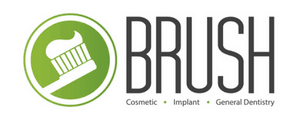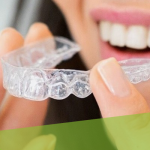Understanding and Managing Dental Anxiety: A Guide
Dental anxiety is a common concern among many patients, often leading to procrastination or avoidance of vital dental treatments. At Brush Dental, we understand the impact dental anxiety can have on an individual’s oral health and overall well-being, and we are committed to providing a comfortable and relaxing experience for our patients in the University District, Wallingford, and North Seattle area.
Dental anxiety can vary in severity, from mild apprehension to an intense phobia, and may arise from various factors. For some, fear of the unknown or a general aversion to medical environments might contribute to unease. For others, negative past experiences or fear of pain may be the primary cause. Regardless of the origin, dental anxiety can have serious consequences if it leads to avoiding essential dental care.
In this blog post, we aim to educate on dental anxiety and explore various strategies to help patients manage their fears and feel more at ease during dental appointments. Our experienced team at Brush Dental is dedicated to offering personalized care, working closely with patients to address their concerns and build trust in a calm, stress-free environment. By understanding dental anxiety and implementing effective coping mechanisms, patients can feel empowered to take control of their oral health and receive the care they need to maintain a healthy, beautiful smile.
Common Causes of Dental Anxiety
1. Fear of Pain
One of the most prevalent causes of dental anxiety is the fear of pain, which may be based on previous negative experiences or stories shared by others. However, it’s important to remember that advancements in modern dentistry have made many procedures significantly less painful or even pain-free, with the help of effective anesthesia and cutting-edge techniques.
2. Fear of the Unknown
Many individuals experience anxiety due to a lack of knowledge about dental procedures or uncertainty about what to expect during their appointment. This fear can be fueled by misinformation or a general aversion to unfamiliar situations.
3. Loss of Control
For some patients, feeling a loss of control in the dental chair can contribute to anxiety. The vulnerability of having someone work in their mouth and not being able to see what’s happening can be a source of stress.
4. Embarrassment or Judgment
Another cause of dental anxiety may involve feelings of embarrassment about the appearance of one’s teeth or fear of being judged by the dental professional for having poor oral hygiene.
Effective Strategies for Managing Dental Anxiety
1. Communicate with Your Dental Team
Open communication with your dentist and dental team is essential for managing dental anxiety. Inform them about your fears and concerns, as well as any past experiences that may have contributed to your anxiety. By working together, your dental team can customize your treatment, adapt their approach, and make accommodations to ensure your comfort.
2. Practice Relaxation Techniques
Deep breathing exercises, progressive muscle relaxation, or visualization techniques can help reduce anxiety and promote relaxation before and during dental appointments. By focusing on slow, steady breaths and visualizing peaceful scenarios, patients can shift their attention away from their fears and alleviate tension.
3. Bring a Support Person
Having a trusted friend or family member accompany you to your dental appointment can provide emotional support and help you feel more at ease. Discuss this option with your dental team beforehand to confirm their policies on having companions in treatment rooms.
4. Use Distractions
Incorporating distractions during your dental appointment can serve as a helpful tool in reducing anxiety. Listening to music or an audiobook through headphones, watching a favorite television show, or holding a stress ball can occupy your mind and help you stay calm during treatment.
5. Consider Sedation Dentistry
Sedation dentistry offers various options for managing dental anxiety by reducing consciousness during dental procedures. Levels of sedation range from minimal, such as nitrous oxide or “laughing gas”, to full general anesthesia. Discuss your concerns with your dentist and explore potential sedation options appropriate for your individual case.
Psychological Approaches to Treating Dental Anxiety
1. Cognitive Behavioral Therapy (CBT)
CBT is a therapy technique aimed at identifying and changing negative thought patterns and behaviors associated with dental anxiety. Through CBT, patients can learn to develop healthy coping strategies to overcome their fears and feel more comfortable in dental settings.
2. Exposure Therapy
Exposure therapy involves gradually exposing patients to their fear source to help them build tolerance and desensitize their anxiety response. This approach may include slow, incremental progress, such as first visiting the dental office without receiving treatment and working up to more involved procedures over time.
Managing Dental Anxiety with Brush Dental
Managing dental anxiety is a crucial step in ensuring that you receive the necessary dental care to maintain a healthy smile. By understanding its causes, implementing effective coping strategies, and working closely with your dental team, you can overcome dental anxiety and experience more comfortable and stress-free appointments.
At our Seattle dental office, Brush Dental, we proudly serve the University District, Wallingford, and North Seattle area, providing compassionate and personalized dental care that addresses the unique needs and concerns of each patient. Our experienced team is dedicated to creating a comfortable and welcoming environment where patients feel safe and supported, ensuring a positive dental experience for even the most anxious individuals. Schedule a consultation with our dentist in Seattle today and take the first step toward overcoming your dental anxiety and achieving a healthy, beautiful smile.







